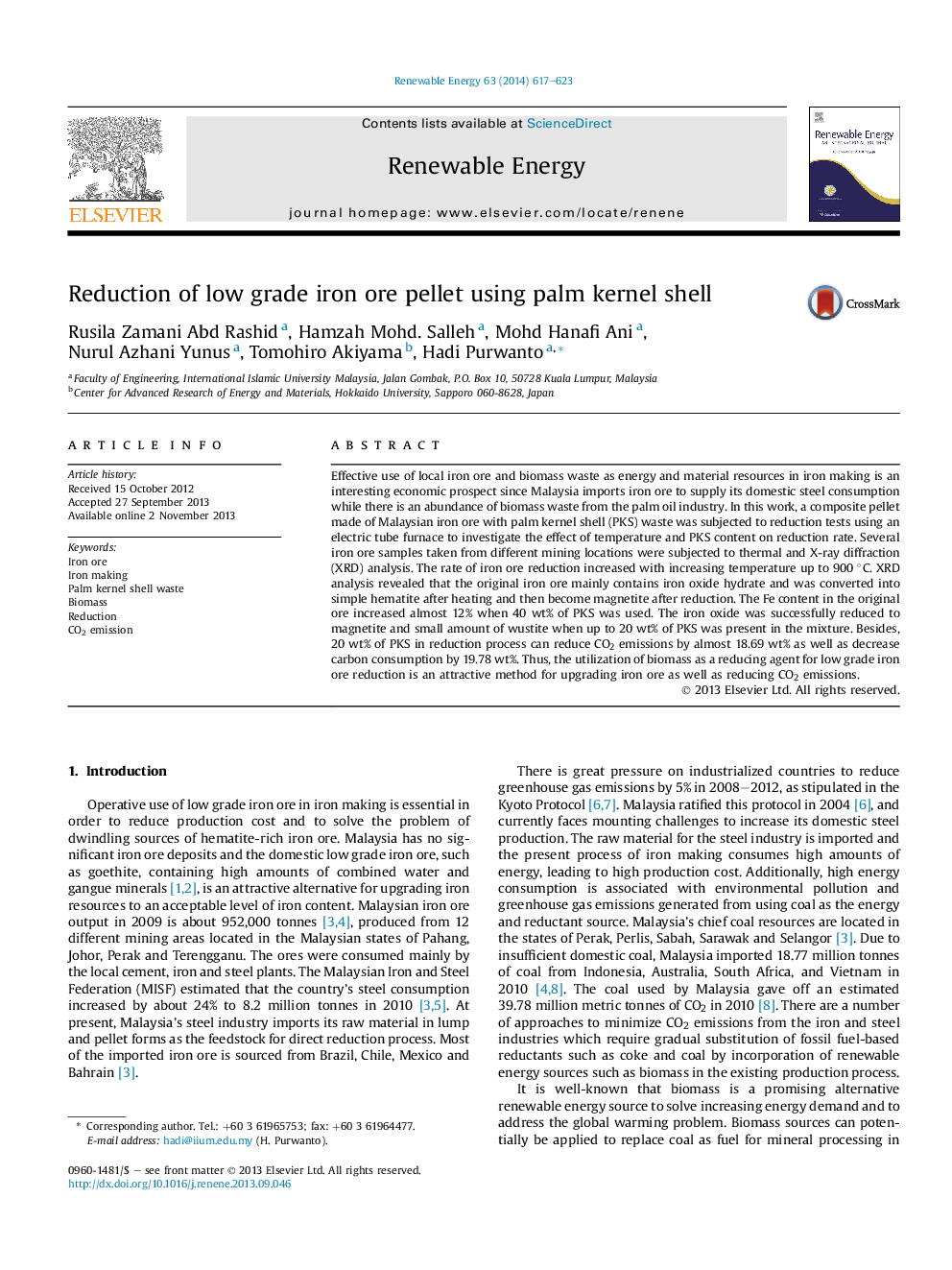| Article ID | Journal | Published Year | Pages | File Type |
|---|---|---|---|---|
| 6769065 | Renewable Energy | 2014 | 7 Pages |
Abstract
Effective use of local iron ore and biomass waste as energy and material resources in iron making is an interesting economic prospect since Malaysia imports iron ore to supply its domestic steel consumption while there is an abundance of biomass waste from the palm oil industry. In this work, a composite pellet made of Malaysian iron ore with palm kernel shell (PKS) waste was subjected to reduction tests using an electric tube furnace to investigate the effect of temperature and PKS content on reduction rate. Several iron ore samples taken from different mining locations were subjected to thermal and X-ray diffraction (XRD) analysis. The rate of iron ore reduction increased with increasing temperature up to 900 °C. XRD analysis revealed that the original iron ore mainly contains iron oxide hydrate and was converted into simple hematite after heating and then become magnetite after reduction. The Fe content in the original ore increased almost 12% when 40 wt% of PKS was used. The iron oxide was successfully reduced to magnetite and small amount of wustite when up to 20 wt% of PKS was present in the mixture. Besides, 20 wt% of PKS in reduction process can reduce CO2 emissions by almost 18.69 wt% as well as decrease carbon consumption by 19.78 wt%. Thus, the utilization of biomass as a reducing agent for low grade iron ore reduction is an attractive method for upgrading iron ore as well as reducing CO2 emissions.
Related Topics
Physical Sciences and Engineering
Energy
Renewable Energy, Sustainability and the Environment
Authors
Rusila Zamani Abd Rashid, Hamzah Mohd. Salleh, Mohd Hanafi Ani, Nurul Azhani Yunus, Tomohiro Akiyama, Hadi Purwanto,
